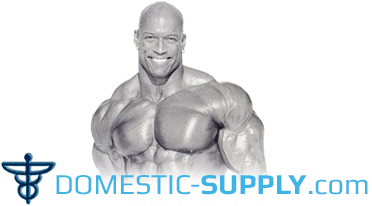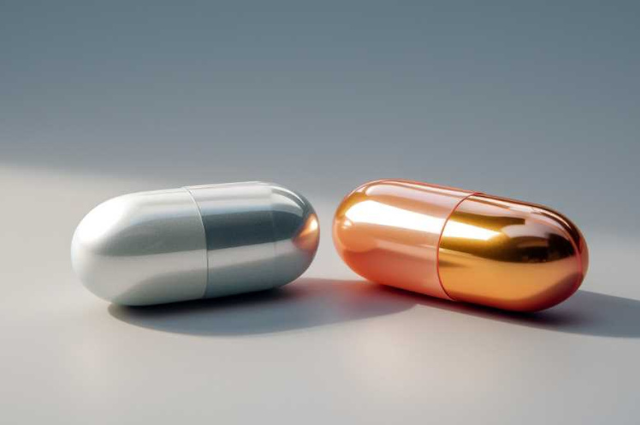9 Best Differences: Corticosteroids Vs Anabolic Steroids
This comprehensive article delves into the nine key differences between corticosteroids and anabolic steroids, two types of substances that, despite their shared nomenclature, serve distinct roles in the medical and sports fields.
We will explore each steroid's purpose, side effects, usage, and legal implications.
This analysis aims to enhance your understanding of these substances, their benefits as well as their potential risks, providing an essential guide for those interested in medicine, sports science, or general health knowledge.
Key Takeaways
- Corticosteroids are produced in the adrenal cortex and regulate immune response, inflammation, metabolism, and stress response, while anabolic steroids are synthetic derivatives of testosterone and promote protein synthesis, leading to increased muscle growth and improved physical performance.
- Corticosteroids act as anti-inflammatory and immunosuppressive agents, reducing inflammation, pain, and swelling, while anabolic steroids stimulate muscle growth and division, accelerating muscle growth, strength, and size.
- Corticosteroids can have potential risks and side effects such as weight gain, mood changes, high blood pressure, hormonal imbalance, cardiovascular issues, and psychological effects, while anabolic steroids can cause side effects like liver damage, cardiovascular diseases, testicular shrinkage, gynecomastia, and masculinization in females.
- The non-medical use of anabolic steroids is illegal in many jurisdictions, and in the realm of sports, their use is considered doping and can lead to severe consequences.
Understanding Steroid Basics
Regularly utilized in medical treatments, steroids are complex compounds with significant effects on bodily functions. They are naturally occurring substances that are classified into two broad categories: corticosteroids and anabolic steroids. Despite sharing the 'steroid' moniker, these two categories exhibit vastly different physiological effects, mechanisms of action, and therapeutic applications.
Corticosteroids, produced in the adrenal cortex, play a critical role in maintaining homeostasis in the body. They regulate various processes including immune response, inflammation, metabolism, and stress response. Prednisone and cortisone are commonly prescribed corticosteroids, used to manage conditions like asthma, lupus, and arthritis.
On the other hand, anabolic steroids or anabolic-androgenic steroids (AAS), are synthetic derivatives of testosterone. They promote protein synthesis, leading to increased muscle growth and improved physical performance. While their medical use is limited, they have unfortunately gained notoriety for their misuse in sports and bodybuilding.
Despite their benefits, the use of steroids comes with potential risks and side effects. Corticosteroids can cause weight gain, mood changes, and high blood pressure among others. Anabolic steroids can lead to hormonal imbalance, cardiovascular issues, and psychological effects.
Purpose of Corticosteroids
The primary function of corticosteroids is to regulate a variety of bodily processes, most notably the immune response and inflammation. These naturally occurring hormones, produced in the adrenal cortex, act as potent anti-inflammatory and immunosuppressive agents. Their role is essential in maintaining homeostasis, the body's internal balance, by modulating and controlling various physiological responses.
Corticosteroids exhibit their effects by binding to specific intracellular glucocorticoid receptors, leading to changes in gene transcription and protein synthesis. This complex mechanism of action results in a broad spectrum of effects, including decreased production of pro-inflammatory cytokines, suppression of leukocyte function, and attenuation of the immune response. In essence, corticosteroids help to prevent and reduce inflammation, thereby reducing pain and swelling.
Beyond their role in managing inflammation and immune response, corticosteroids serve other vital functions. They participate in carbohydrate, protein, and fat metabolism, regulate blood electrolyte levels, and contribute to the body's stress response. In situations of physical or psychological stress, the body ramps up corticosteroid production to enhance energy production and suppress non-essential bodily functions, thus prioritizing survival.
Clinically, corticosteroids are widely used in the treatment of a range of conditions, including asthma, rheumatoid arthritis, lupus, and other autoimmune disorders. They can also be used for adrenal insufficiency, like Addison's disease, where the body doesn't produce enough of these hormones. However, their use requires careful monitoring due to potential side effects, particularly with long-term administration.
Purpose of Anabolic Steroids
A significant number of athletes and bodybuilders utilize anabolic steroids to enhance muscle growth and improve physical performance. Anabolic steroids, scientifically known as anabolic-androgenic steroids (AAS), are synthetic variations of the male sex hormone testosterone. The term 'anabolic' refers to the muscle-building properties of these drugs, while 'androgenic' pertains to the enhancement of male sex characteristics.
Anabolic steroids function by stimulating the androgen receptors in muscle cells, which in turn promote cell growth and division. This accelerates the rate of muscle growth, leading to increased strength and size. Additionally, anabolic steroids can reduce muscle damage during intense workouts, promoting faster recovery and preventing overtraining.
Apart from their use in sports and bodybuilding, anabolic steroids are also employed in medicine, though with caution due to their potential side effects. They are used to treat conditions like delayed puberty, muscle loss from certain diseases, and types of anemia. Their muscle-building properties make them effective in reversing the muscle-wasting effects of diseases like cancer or AIDS.
Despite their benefits, the non-medical use of anabolic steroids is associated with serious health risks. These include cardiovascular diseases, liver damage, psychological effects like aggression and mood swings, and the suppression of natural hormone production. This has led to the regulation of anabolic steroids in many countries, making their non-prescription use illegal.
Side Effects: Corticosteroids
Contrary to anabolic steroids, corticosteroids present a unique spectrum of side effects that are important to consider in medical and non-medical contexts. Corticosteroids, often prescribed for their anti-inflammatory and immunosuppressive properties, can exert a broad array of adverse reactions that can vary in severity, depending upon the dosage, duration of use, and the individual patient's susceptibility.
One of the most notable side effects of corticosteroids is their propensity to induce Cushing's syndrome. This condition, characterized by truncal obesity, a rounded 'moon' face, and a 'buffalo hump' appearance of fat deposited between the shoulders, is a direct result of the systemic hormonal imbalance caused by the drug. Moreover, corticosteroids can trigger hypertension, diabetes mellitus, and peptic ulcers due to their metabolic effects on the cardiovascular and gastrointestinal systems, respectively.
Osteoporosis and myopathy are other debilitating side effects related to the long-term use of corticosteroids. The former is due to the drug's negative impact on bone metabolism, leading to loss of bone density and increased risk of fractures. The latter, myopathy, is a muscle disease characterized by weakness and atrophy, resulting from the catabolic effect of corticosteroids on skeletal muscle.
Additionally, corticosteroids can alter mood and cognition, leading to psychological effects such as depression, anxiety, and psychosis. The drug's immunosuppressive action also raises susceptibility to infections. Lastly, abrupt withdrawal from corticosteroids can cause adrenal insufficiency, underscoring the need for careful dose tapering.
Understanding these potential side effects is crucial for healthcare providers and patients alike to make informed decisions regarding corticosteroid use. The benefits of the drug must be weighed against these risks, with close monitoring and preventive measures being key to minimize potential harm.
Side Effects: Anabolic Steroids
Frequently misused for their muscle-building properties, anabolic steroids harbor a multitude of detrimental side effects that can significantly impact both physical and psychological health.
Physically, these drugs can promote various conditions such as liver damage, cardiovascular disease, and hormonal imbalances. Liver damage is often a consequence of oral steroid use due to the organ's responsibility in metabolizing these chemicals, which can lead to conditions like hepatitis or liver cancer. Anabolic steroids also increase LDL cholesterol (the 'bad' cholesterol) and decrease HDL cholesterol (the 'good' cholesterol), thereby contributing to the development of cardiovascular diseases.
Furthermore, anabolic steroids interfere with the endocrine system, leading to abnormal production of hormones. In males, they can cause testicular shrinkage, gynecomastia (the development of breast tissue), and reduced sperm count. In females, they can induce masculinization, resulting in deepened voice, enlarged clitoris, and abnormal menstrual cycles.
Psychologically, anabolic steroid misuse can lead to aggressive behavior, mood changes, and even mental disorders. Users may experience heightened irritability, impaired judgment, and increased aggression, often termed 'roid rage'. Moreover, prolonged use can result in dependency, leading to withdrawal symptoms like depression and apathy when usage is discontinued.
Usage in Medical Field
Despite the potential for misuse, both corticosteroids and anabolic steroids play crucial roles in the medical field, addressing a variety of health conditions with their unique properties. These compounds, while chemically similar, are used to treat very different ailments due to their distinct mechanisms of action.
Corticosteroids, for instance, are primarily used for their anti-inflammatory and immunosuppressive properties. They are often prescribed for conditions such as:
- Asthma: By reducing inflammation in the airways, corticosteroids can help to relieve symptoms such as wheezing and shortness of breath.
- Rheumatoid arthritis: Corticosteroids can decrease joint inflammation and slow the progression of this autoimmune disorder.
- Autoimmune disorders: These steroids can suppress the immune response, helping to control conditions where the immune system attacks the body's own tissues.
On the other hand, anabolic steroids are used to promote tissue growth and enhance physical performance. Their applications include:
- Delayed puberty: Anabolic steroids can stimulate growth and development in adolescents who are lagging in their physical development.
- Muscle wasting diseases: These steroids can help to preserve muscle mass in patients with conditions such as cancer or AIDS.
- Hormone replacement therapy: For men with low testosterone levels, anabolic steroids can restore hormone balance and improve symptoms.
Usage in Sports and Fitness
While both corticosteroids and anabolic steroids serve pivotal roles in treating various health conditions, their utilization extends beyond the medical field, notably into the realm of sports and fitness. Athletes and fitness enthusiasts often resort to these substances to enhance performance and speed up recovery.
Corticosteroids, primarily used for their anti-inflammatory and immunosuppressive properties, are frequently employed to manage sports-related injuries. They may be administered to reduce inflammation and pain associated with conditions like tendonitis or arthritis, enabling athletes to recover faster and resume training. However, it's essential to note that corticosteroids do not directly enhance athletic performance, but rather facilitate quicker recovery from injuries.
Conversely, anabolic steroids, a synthetic version of testosterone, are often used illicitly by athletes and bodybuilders to build muscle mass and improve athletic performance. Their usage can result in significant increases in strength, speed, and endurance, providing a competitive edge. However, this comes with high health risks, leading to their prohibition in most professional sports.
Despite the potential advantages, the misuse of these substances carries severe consequences. Overuse of corticosteroids can lead to complications such as osteoporosis, hypertension, and mood changes. On the other hand, anabolic steroids can cause liver damage, cardiovascular diseases, and psychological disorders, among other health issues.
Legal Implications
The utilization of corticosteroids and anabolic steroids, particularly in the sports and fitness industry, presents significant legal implications. Both types of steroids have a distinct legal status in various jurisdictions, and misuse can lead to serious legal repercussions. This is primarily due to their divergent pharmacological effects and potential for abuse, especially in competitive sports and bodybuilding.
The legal landscape around these substances is complex and varies from country to country:
- Corticosteroids
- Prescription only: In many jurisdictions, corticosteroids are classified as prescription drugs. This means their sale, possession, and use without a valid prescription is illegal.
- Misuse penalties: The misuse of prescription drugs, including corticosteroids, can lead to legal penalties, including fines, imprisonment, or both.
- Anabolic Steroids
- Controlled substances: Anabolic steroids are often classified as controlled substances due to their high potential for abuse and serious health risks.
- Strict regulations: The possession, sale, and use of anabolic steroids without a valid medical prescription is illegal in many parts of the world.
- Doping violations: In sports, the use of anabolic steroids is considered doping and can lead to disqualification, stripping of titles, and lifetime bans.
These legal implications underscore the importance of understanding and complying with the specific regulations surrounding the use of these substances. The misuse of either corticosteroids or anabolic steroids can lead to not only health complications but also severe legal consequences. Therefore, it is crucial to ensure any use of these substances is medically justified, legal, and closely monitored.
Frequently Asked Questions
What Are Some Common Brand Names of Both Corticosteroids and Anabolic Steroids?
Common brand names of corticosteroids include Prednisone, Cortisone, and Hydrocortisone. They are primarily used to reduce inflammation and suppress the immune system.
On the other hand, anabolic steroids like Oxandrin and Depo-Testosterone are commonly used to stimulate muscle growth. They mimic the effects of testosterone in the body and are mostly used in the treatment of delayed puberty, muscle loss diseases, and in some cases, for performance enhancement.
Can These Steroids Interact With Other Medications or Supplements?
Yes, both corticosteroids and anabolic steroids can interact with other medications or supplements.
Corticosteroids can interact with drugs like warfarin, phenytoin, and antidiabetic agents, potentially altering their effects.
Anabolic steroids may interact with anticoagulants, insulin, and oral hypoglycemic agents.
It's critical to discuss all medications and supplements with a healthcare provider when using these types of steroids to avoid adverse interactions.
Are There Any Dietary Restrictions or Lifestyle Changes Needed While Taking These Steroids?
Both corticosteroids and anabolic steroids require certain lifestyle changes.
For corticosteroids, a low sodium, high potassium diet is often recommended to counteract water retention. Regular exercise can help manage weight gain.
Anabolic steroids can affect liver function, thus a diet low in alcohol is suggested. Regular blood tests are also necessary.
Always consult with a healthcare provider for personalized advice.
How Is the Dosage Determined for Both Corticosteroids and Anabolic Steroids?
The dosage for both corticosteroids and anabolic steroids is determined by the patient's health condition, weight, and the desired therapeutic effect. For corticosteroids, the dosage is also dependent on the type of disease being treated.
Anabolic steroids dosage is often based on the individual's fitness goals and their tolerance to the drug.
Always, these dosages must be prescribed by a healthcare professional to ensure safety and effectiveness.
Are There Any Alternatives to These Steroids for Those Who Cannot or Do Not Want to Use Them?
Yes, alternatives exist for both corticosteroids and anabolic steroids.
For corticosteroids, non-steroidal anti-inflammatory drugs (NSAIDs) may be used to reduce inflammation.
For anabolic steroids, natural supplements like Creatine and protein powders can enhance muscle growth and performance.
Physical therapy and lifestyle modifications are also effective alternatives.
However, the suitability of these alternatives depends on the individual's health status and the intended use of the steroids.
Conclusion
In conclusion, while both corticosteroids and anabolic steroids serve significant purposes in medicine and sports, they distinctly differ in their function, side effects, and legal implications.
The key lies in understanding these differences to ensure the correct and responsible usage of these substances.
Continued scientific research and analysis will further elucidate the complex roles these steroids play in human health and performance.







